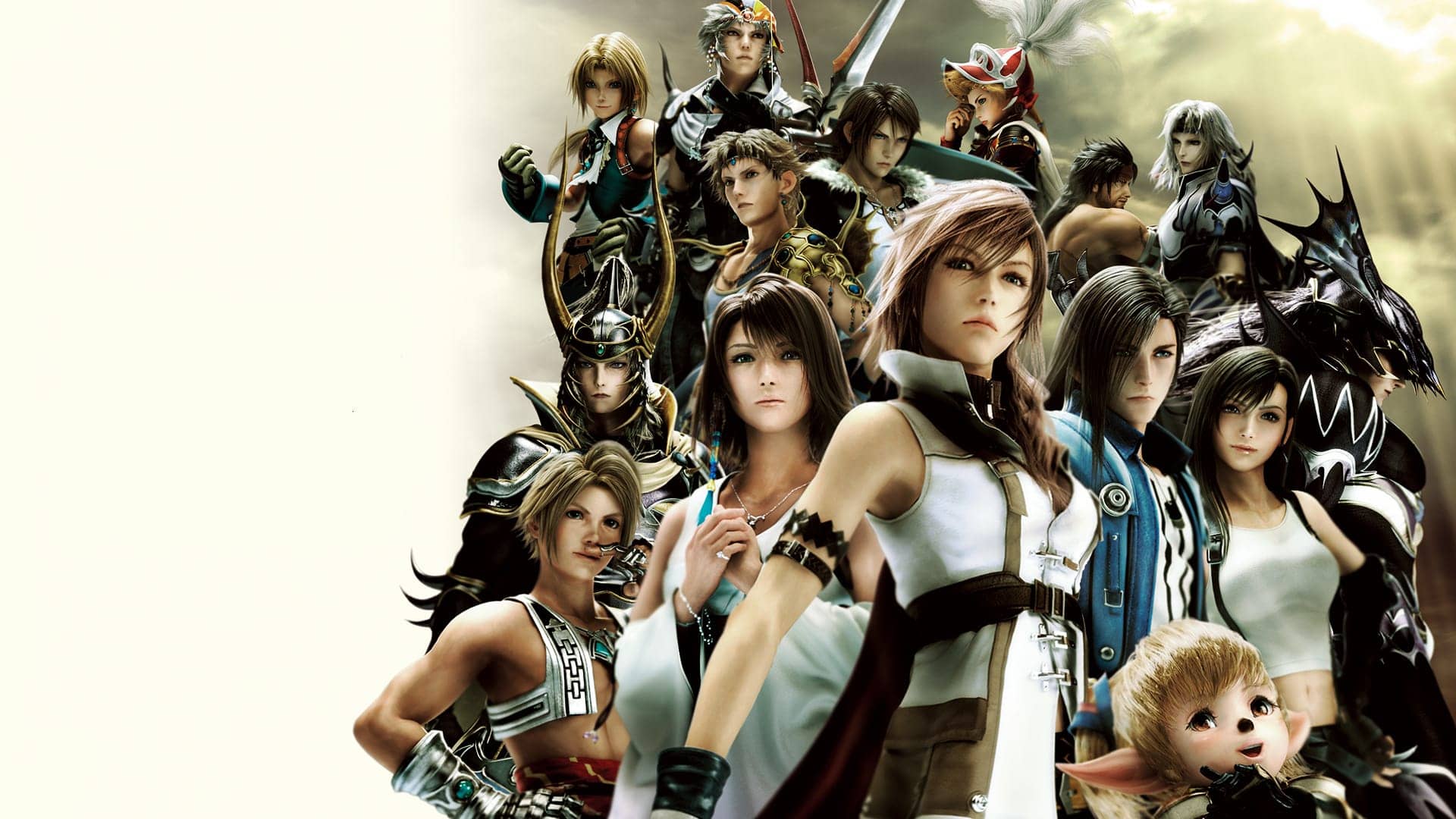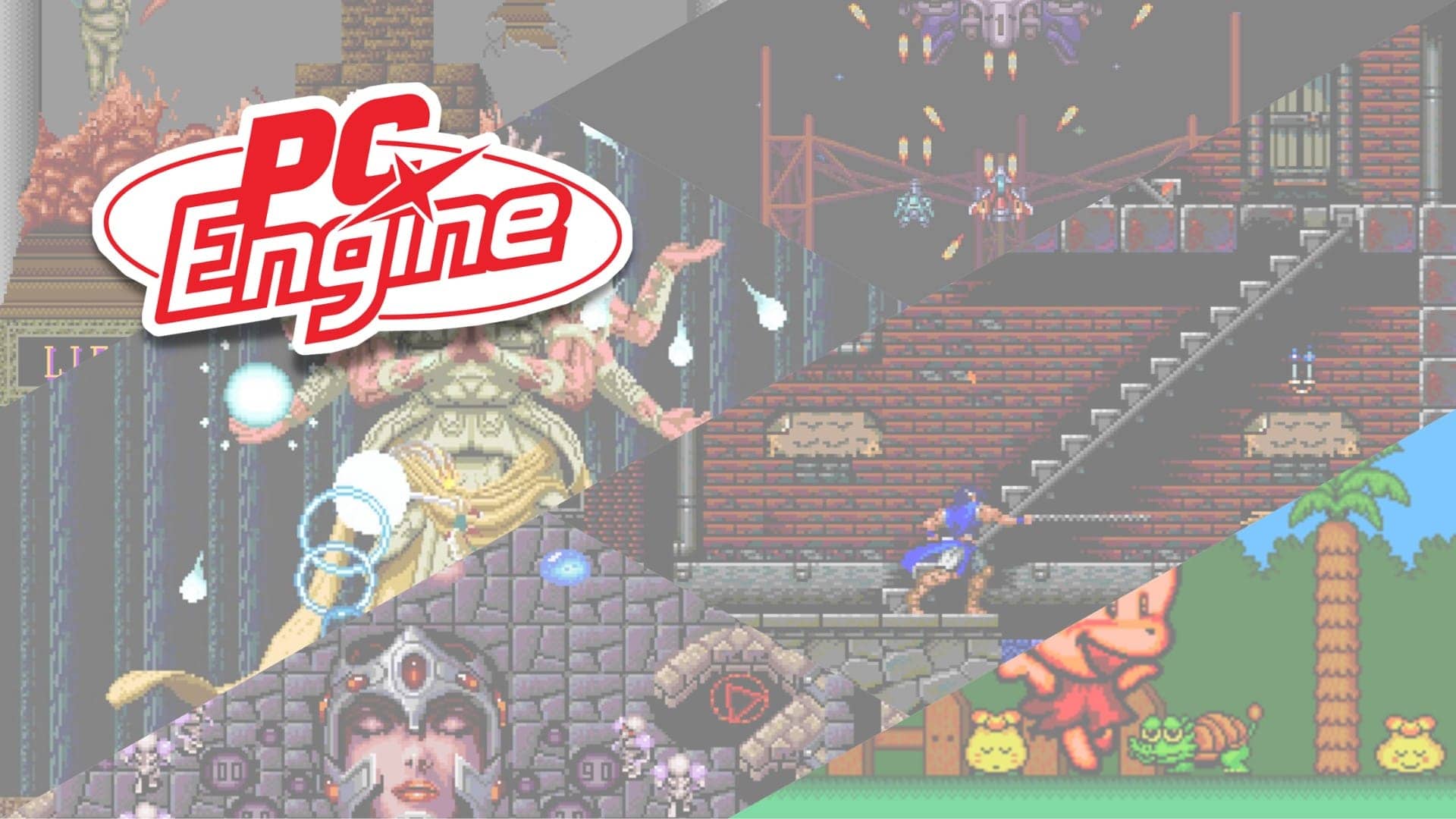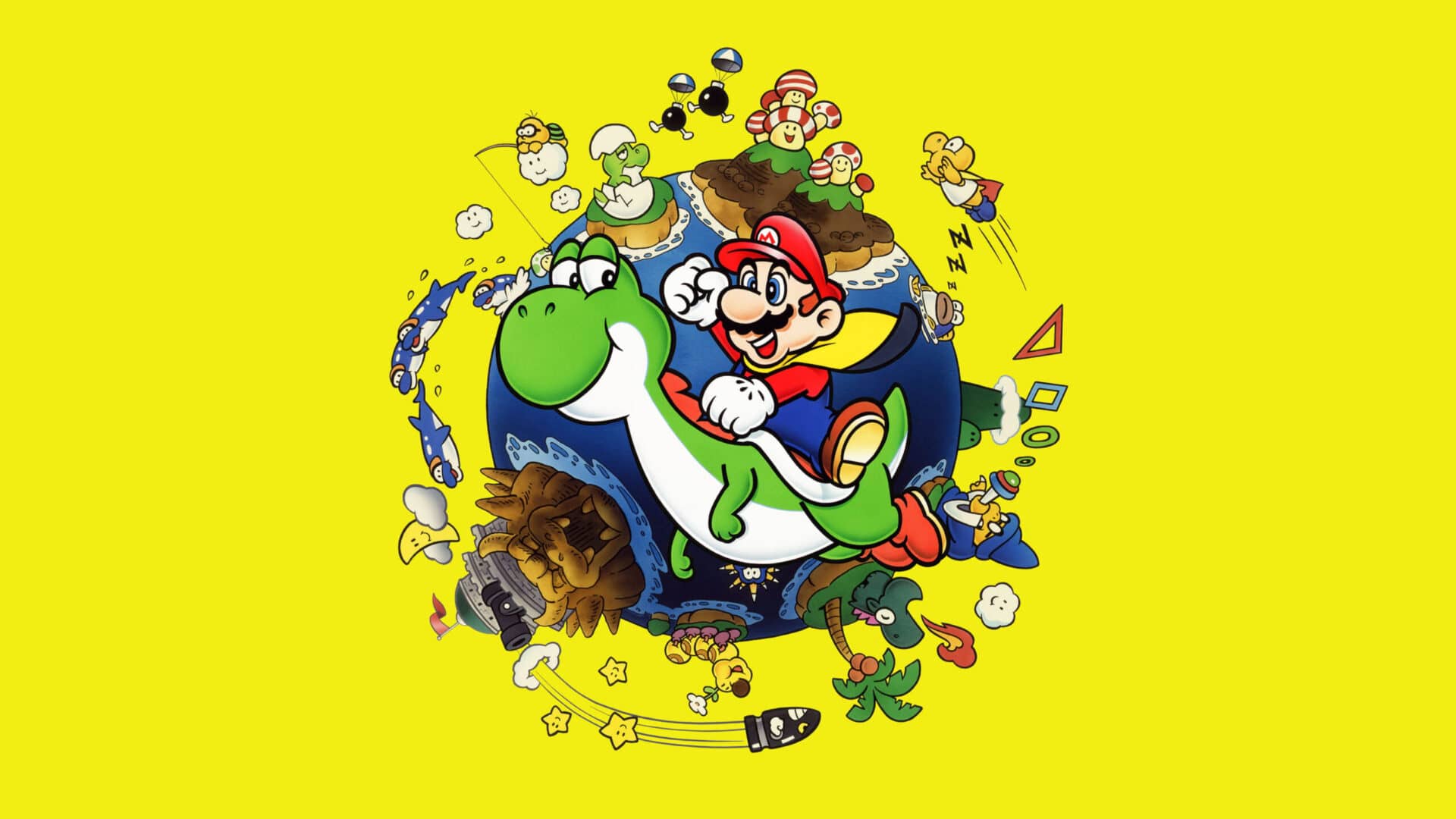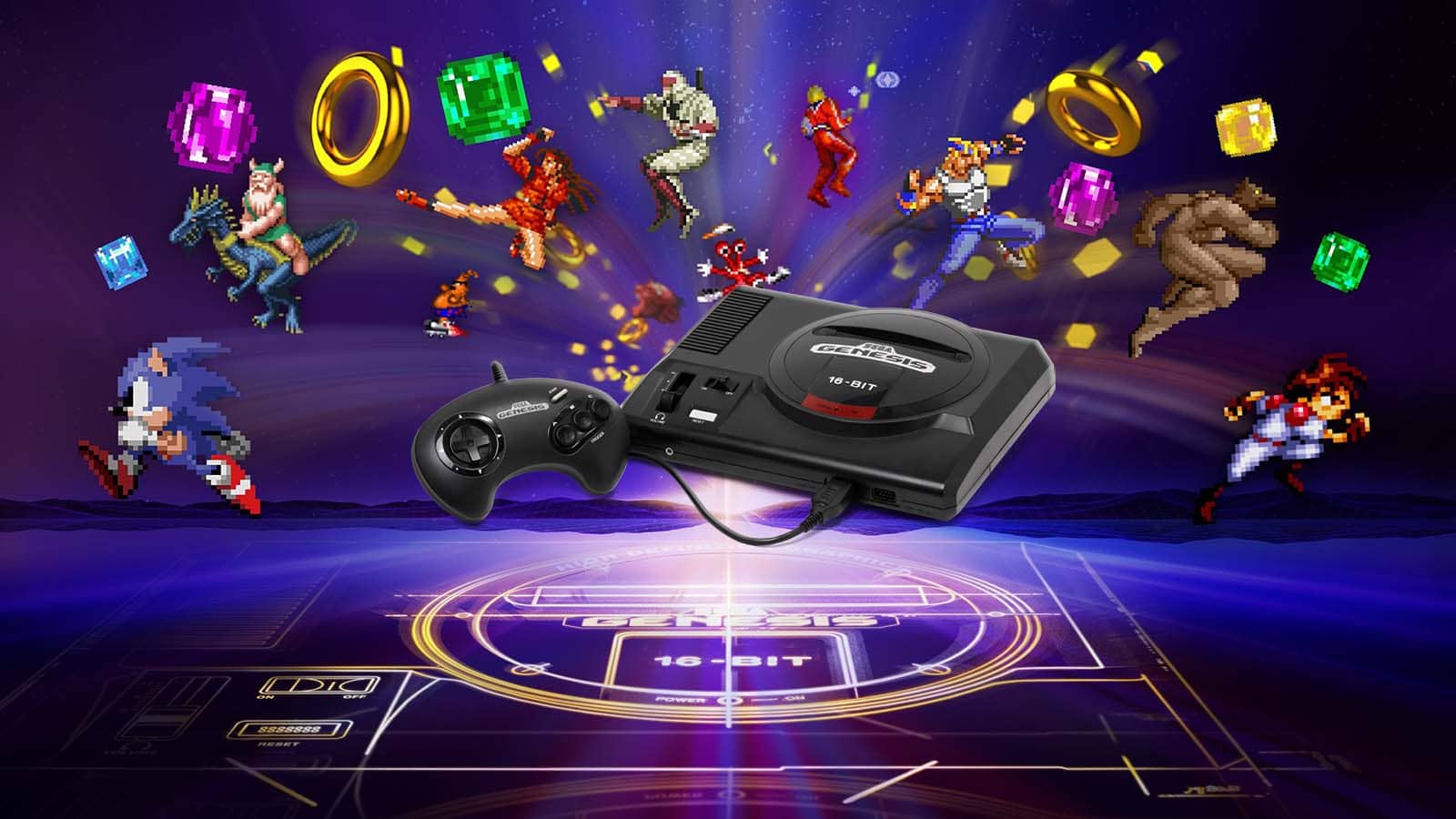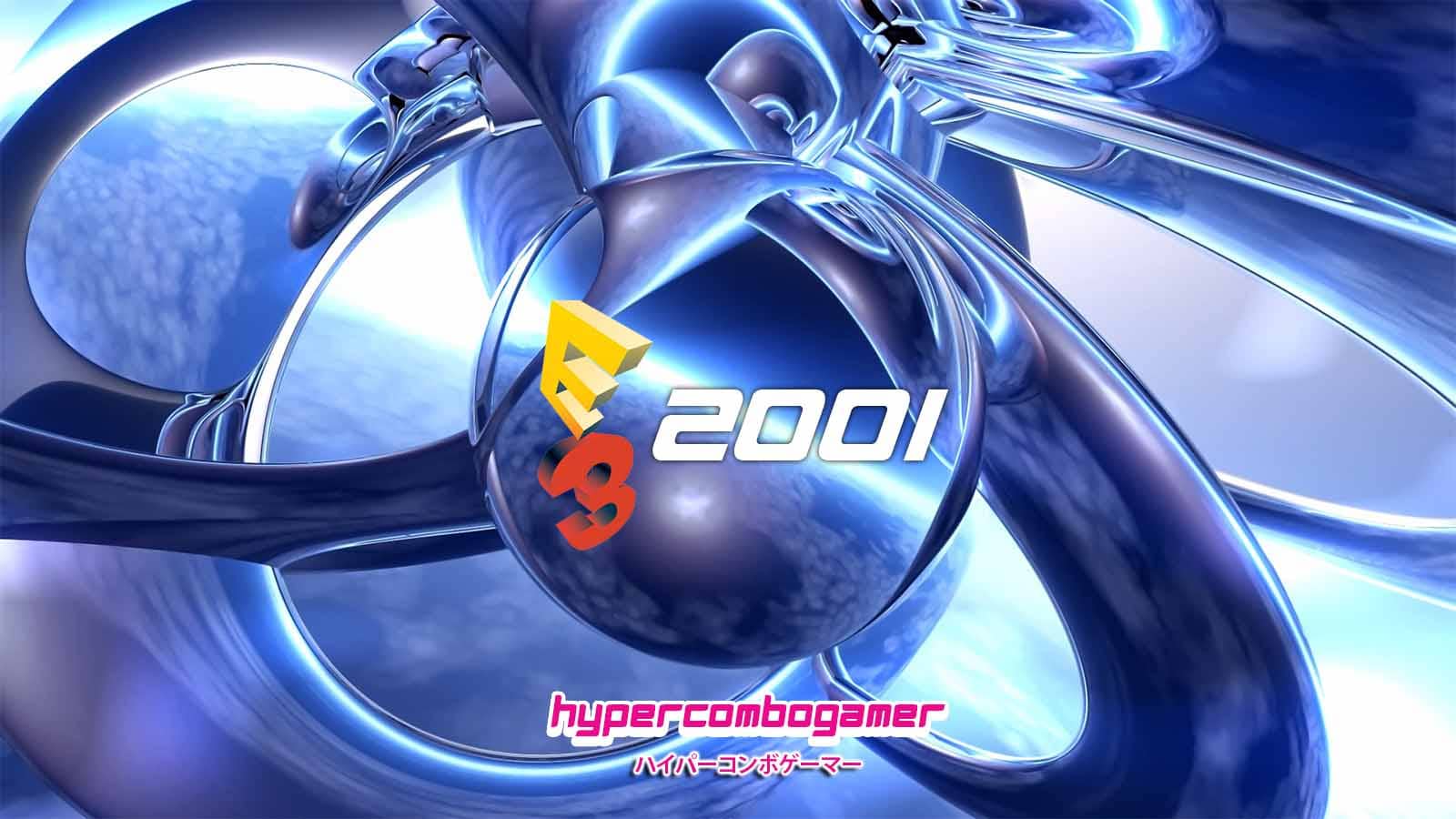The PSP wasn’t just Sony’s answer to Nintendo’s handheld empire—it was a statement of intent. With near-console-level horsepower packed into a sleek, angular shell, it dared to bring the full arcade experience out of dimly lit game centers and into your jacket pocket. And it delivered—hard.
While mainstream minds were locked onto home consoles, the PSP quietly amassed a roster that would make any arcade cabinet blush. From Tekken: Dark Ressurection’s fluid 60FPS precision to Dissidia’s wild RPG-laced chaos, and deep cuts like Hajime no Ippo and Ultraman Fighting Evolution Zero, this was a platform that catered to combo connoisseurs, otakus, and retro purists alike.
These aren’t just “good for handheld” fighting games—they’re straight-up arcade-caliber, with tight controls, strong visuals, and serious replay value. They prove the PSP wasn’t a compromise—it was a battlefield. This is the definitive countdown of the 25 best PSP fighting games—fan favorites, cult hits, and hidden gems you may have missed.
Street Fighter Alpha 3 MAX
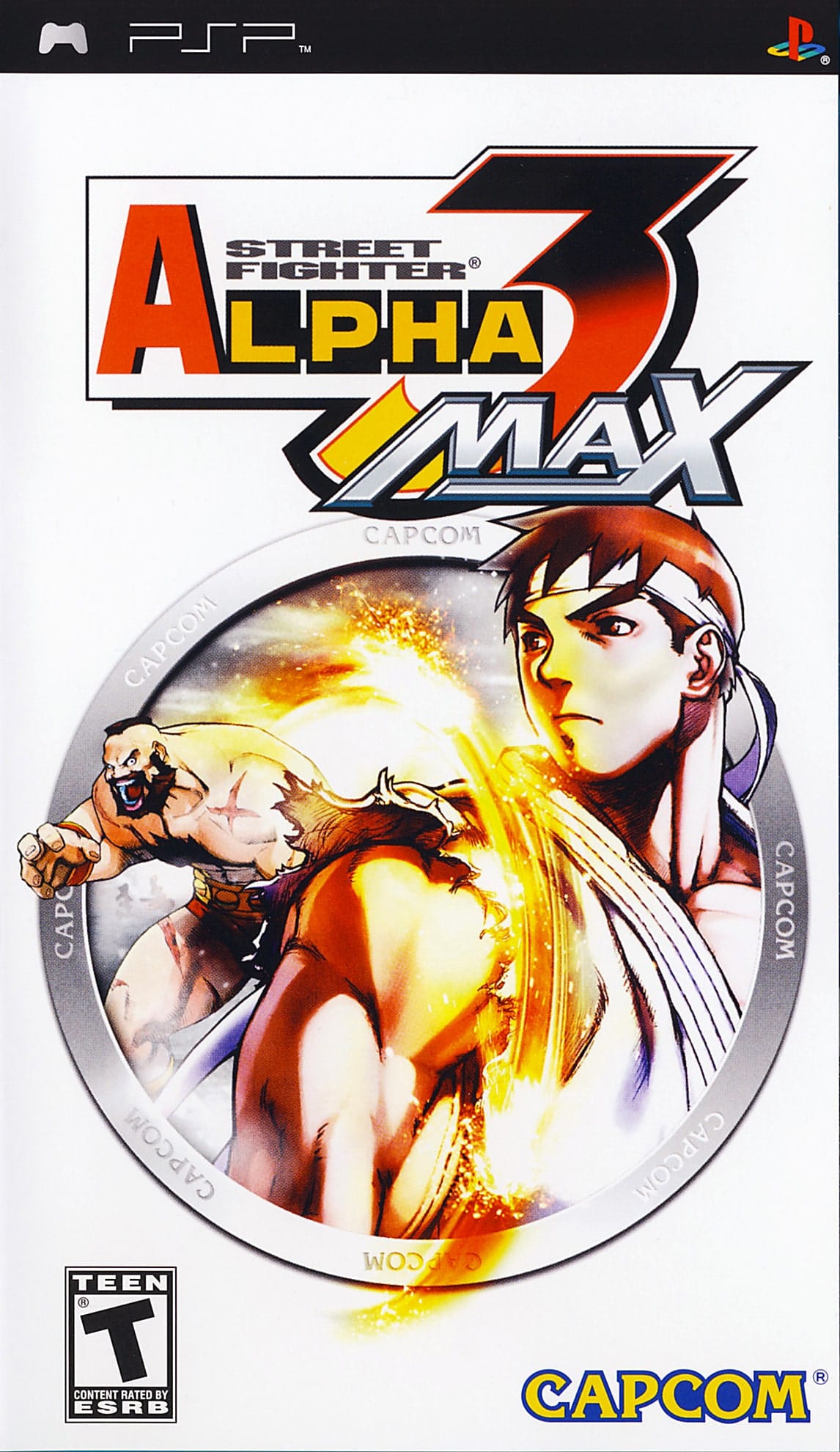
- Developer: Capcom
- Release Date: February 07, 2006
If you only play one fighting game on the PSP, let it be this. Street Fighter Alpha 3 MAX isn’t just a port—it’s the most robust, feature-rich version of Alpha 3 ever made. Every character from the arcade and home versions returns, alongside newcomers like Eagle, Maki, and Ingrid, expanding the roster to 39 fighters. Every style—X-ISM, A-ISM, V-ISM—is faithfully preserved, offering deep mechanical variety. It’s visually crisp, lightning-fast, and feels phenomenal on the PSP’s D-pad.
Why It’s Worth Playing: Whether you’re chasing high-level play or just pulling off flashy supers on the go, this is a masterclass in how to do handheld fighting right. It’s the definitive version of a 2D classic, offering unparalleled depth and portability without sacrificing a pixel of polish.
Tekken: Dark Resurrection
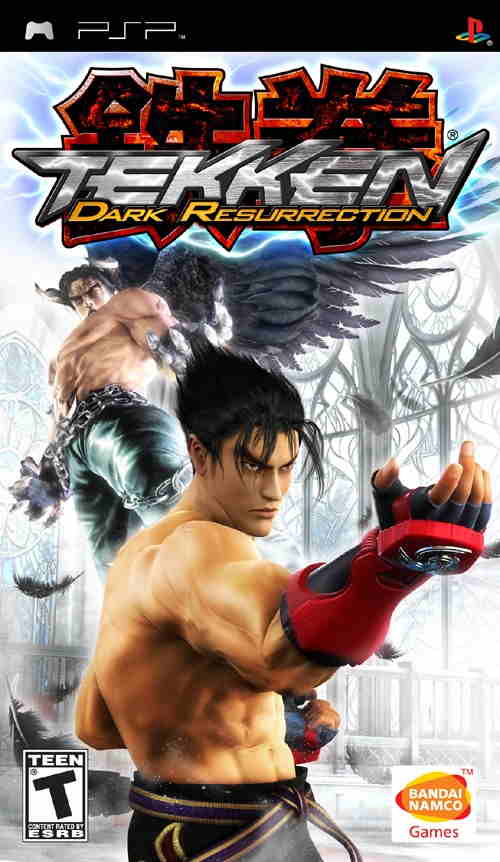
- Developer: Namco
- Release Date: July 6, 2006
Namco’s Tekken series has always been known for its technical excellence and fluid animation—and Dark Resurrection translated that pedigree beautifully onto the PSP. This isn’t a downgraded version of Tekken 5—it is the arcade update, reimagined for handheld without losing a step. It looks phenomenal, runs at a smooth 60fps, and features one of the most refined rosters in the series.
Why It’s Worth Playing: Whether you’re grinding Ghost Battles or linking juggles in wireless multiplayer, it’s an astonishingly complete fighter. It set the gold standard for 3D fighters on the go—visually stunning, mechanically sound, and endlessly replayable.
Tekken 6
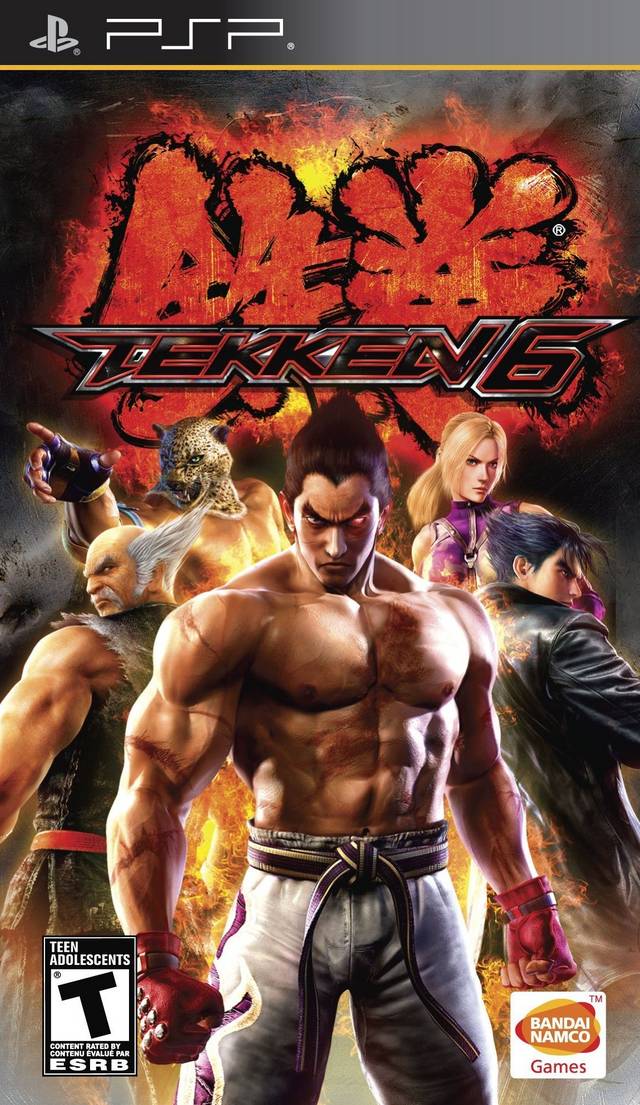
- Developer: Namco Bandai Games
- Release Date: July 6, 2006
Porting Tekken 6 to a portable system seemed like a moonshot—but somehow, it works. Though it lacks the flashy campaign of its console counterpart, the core fighting engine is fully intact. Every character, every stage, every combo string—right there in your hands. It might be missing a few bells and whistles, but what matters most—the feel of the fight—is present and accounted for.
Why It’s Worth Playing: This is the entire Tekken 6 experience condensed into a pocket-sized package, with all the finesse and fury of the arcade version. It’s a portable tour de force for Tekken fans who want uncompromising combat on the go.
Soul Calibur: Broken Destiny
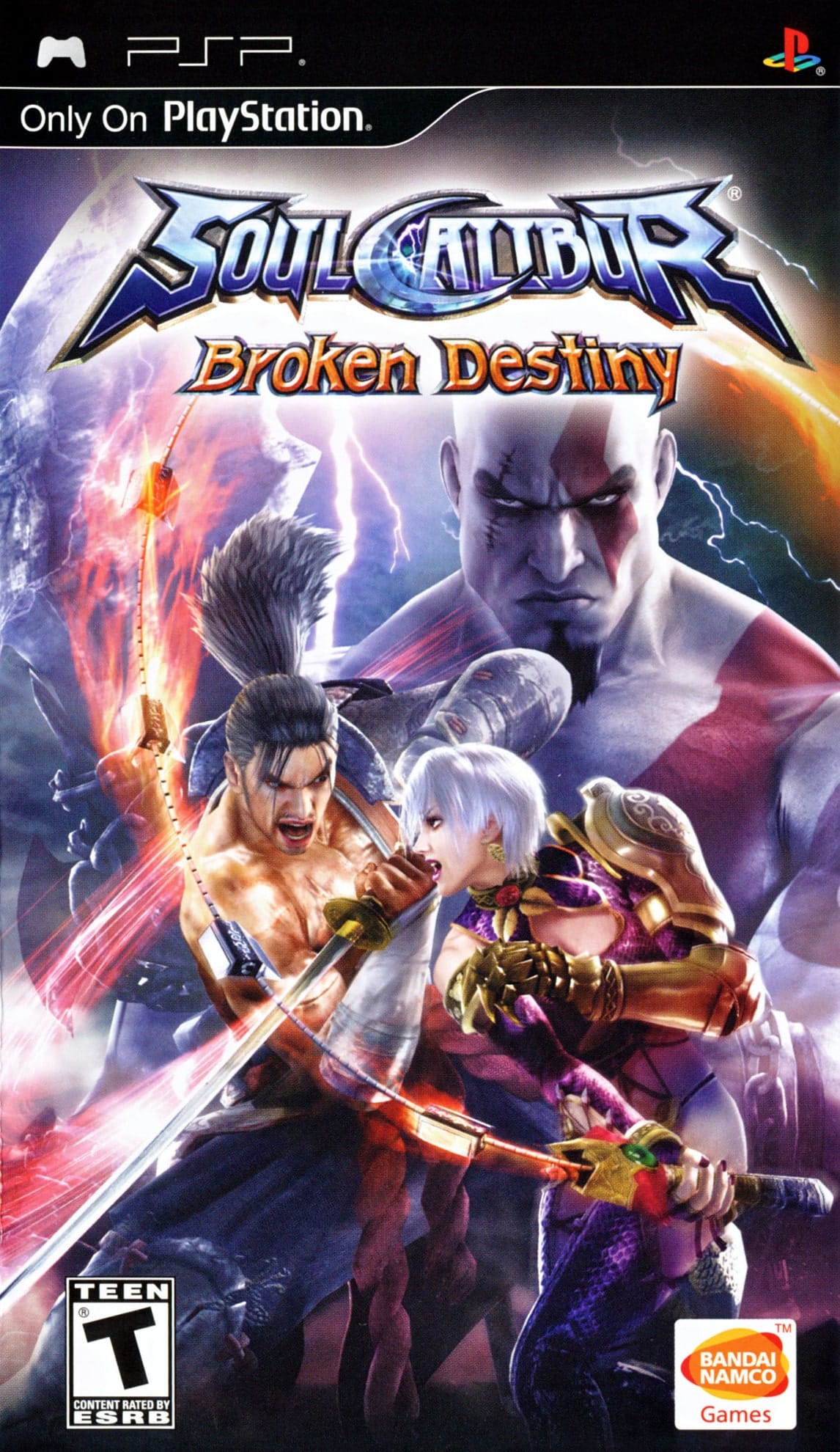
- Developer: Project Soul
- Release Date: September 01, 2009
Weapon-based fighting games have always been rare on handhelds, but Broken Destiny proved it could be done—and done well. Built on the Soul Calibur IV engine, it looks dazzling and plays with surgical precision. The addition of Kratos is a fun novelty, but the real meat lies in the deep character customization, clever single-player missions, and pinpoint fighting mechanics.
Why It’s Worth Playing: Broken Destiny is a game that respects your time and skill, rewarding mastery with graceful, devastating victories. It’s the only portable Soul Calibur experience, and it’s surprisingly full-featured, visually rich, and mechanically faithful. Plus—Kratos with a sword.
BlazBlue: Calamity Trigger Portable
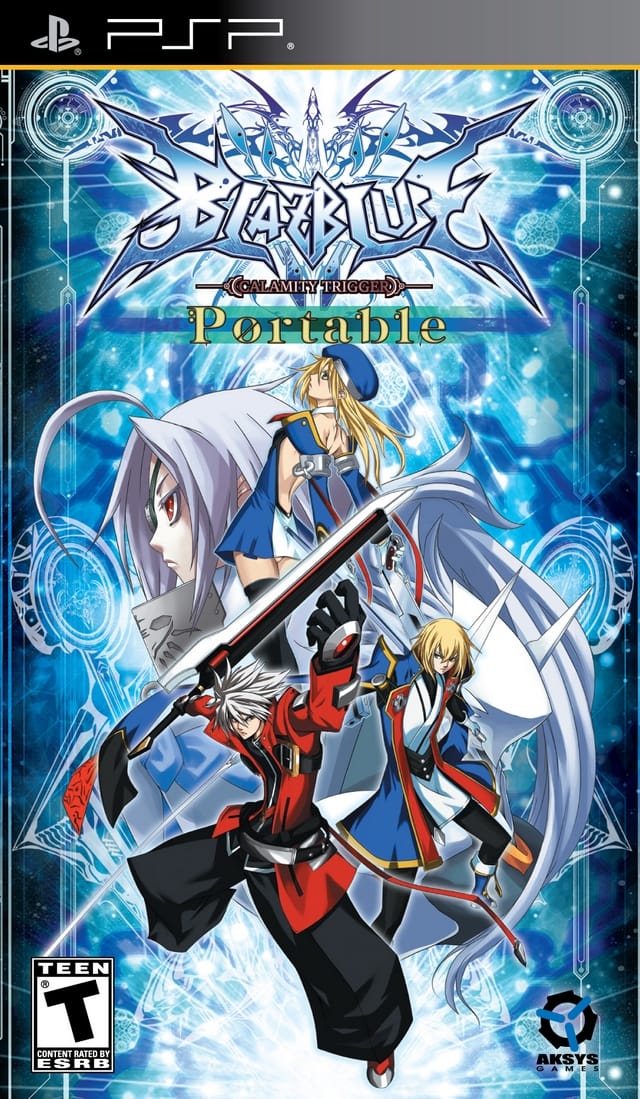
Arc System Works brought its trademark flair to the PSP with BlazBlue: Calamity Trigger Portable, and the results were nothing short of dazzling. Hand-drawn sprites pop off the screen, the soundtrack wails with metal and jazz fusion, and the roster is full of unforgettable personalities—from the aggressive Ragna to the chaos-loving Rachel.
Why It’s Worth Playing: More than just eye candy, it features one of the smoothest and most accessible combo systems in modern 2D fighters, balancing approachability with surprising depth. It’s the full BlazBlue experience in the palm of your hand, offering high-speed combat, anime aesthetics, and enough story to fill a light novel.
Guilty Gear XX Accent Core Plus
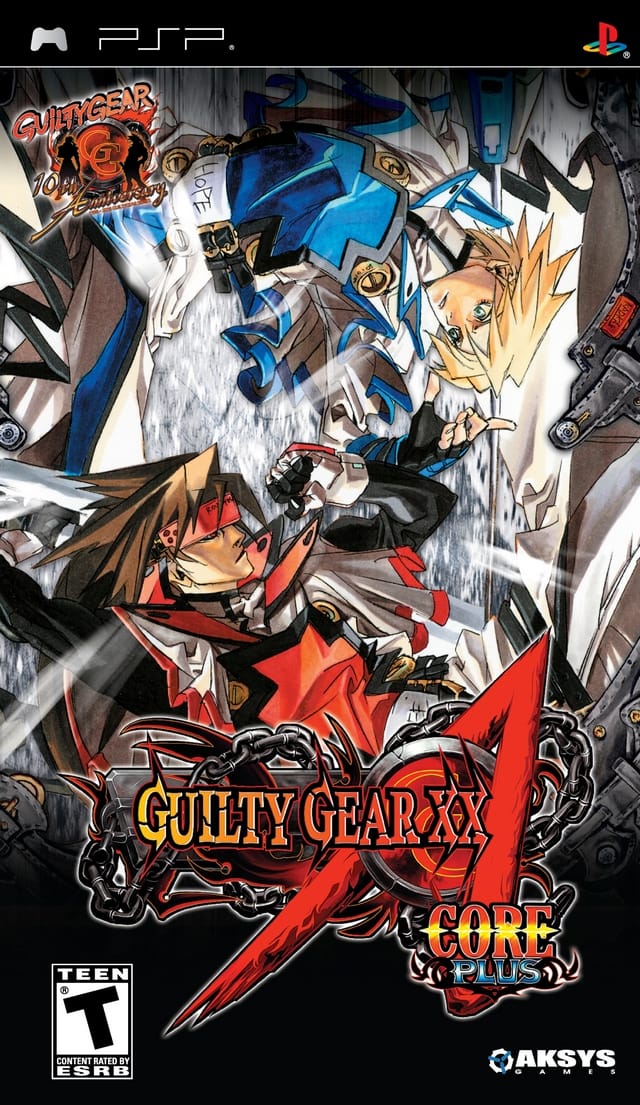
- Developer: Arc System Works
- Release Date: July 24, 2008
Hardcore fighting game fans already know: Guilty Gear doesn’t mess around. Every character is wildly distinct—from the guitar-shredding I-No to the time-controlling Axl Low—and each demands hours of practice. Yet, for all its technical demands, it’s also one of the most rewarding fighters ever crafted.
Why It’s Worth Playing: Accent Core Plus is brutally precise, lightning fast, and stacked with one of the most mechanically complex rosters in 2D history. If you’re chasing a true test of skill, this is it. No hand-holding—just raw, arcade-grade adrenaline and style.
Viewtiful Joe: Red Hot Rumble
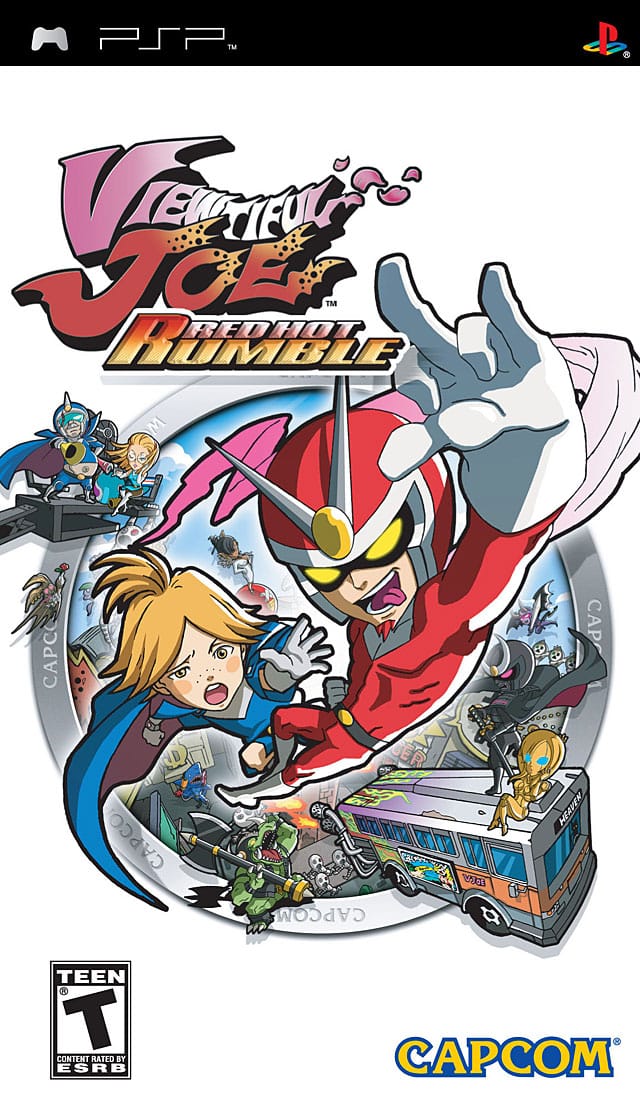
- Developer: Clover Studio
- Release Date: March 22, 2006
Not your traditional one-on-one fighter, Red Hot Rumble brings Smash Bros-like chaos to the Viewtiful Joe universe. Players duke it out in cinematic arenas filled with hazards, collectibles, and mini-objectives, all wrapped in the series’ signature cel-shaded style. It’s less about tight neutral game and more about managing mayhem, but that’s exactly what makes it such a riot.
Why It’s Worth Playing: Red Hot Rumble is a fun, flashy party brawler that doubles as a playable tribute to one of Capcom’s most stylish series. Perfect for casual chaos.
Power Stone Collection
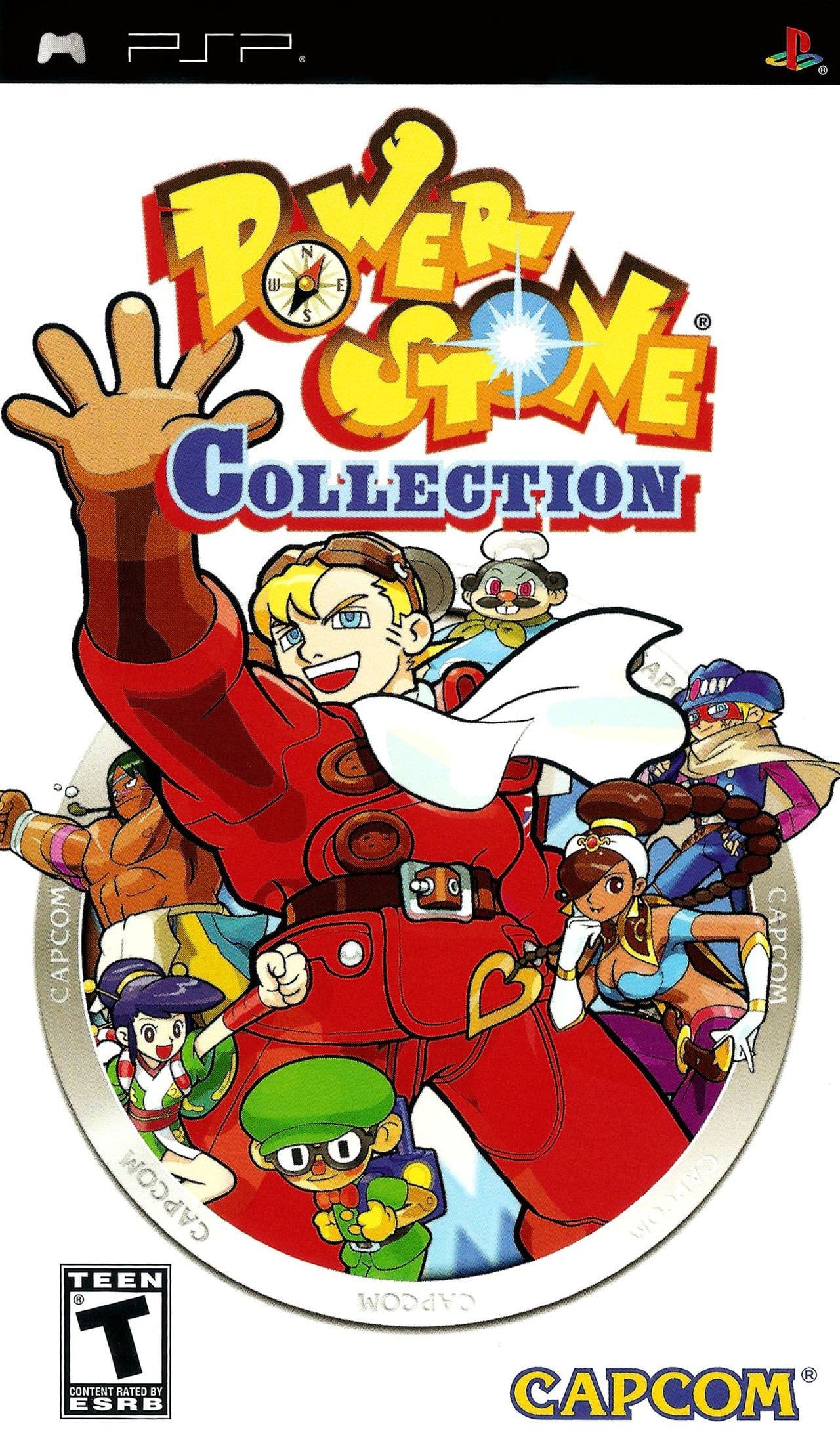
- Developer: Klein Computer Entertainment
- Release Date: October 20, 2006
Capcom’s cult-classic 3D arena fighter returns in this glorious two-for-one package. Both Power Stone and Power Stone 2 come intact, featuring their frenetic free-for-alls, wild item pickups, and explosive transformations. The PSP version even supports ad-hoc multiplayer, turning every session into a portable party.
Why It’s Worth Playing: These are some of the most creative and chaotic multiplayer brawlers ever made. And this is the only way to officially play them outside the Dreamcast. That alone makes it essential.
Fight Night Round 3
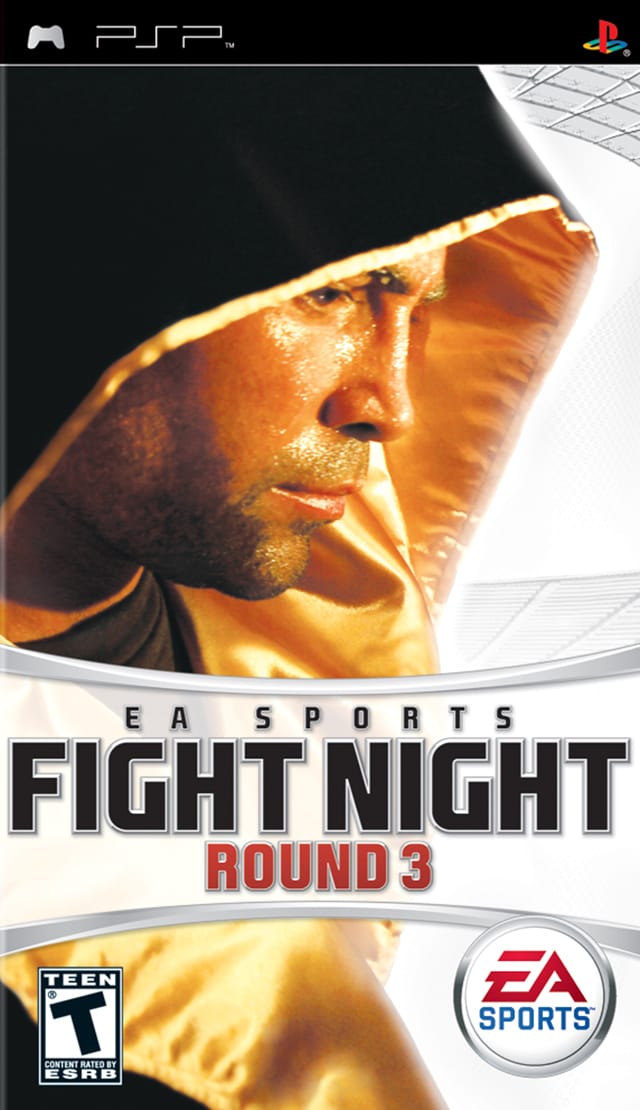
- Developer: EA Chicago
- Release Date: February 20, 2006
EA’s Fight Night Round 3 brought realistic boxing to the PSP with surprising fidelity. Clean footwork, tight counters, and well-timed uppercuts form the foundation of a strategic, slow-burning fighter that rewards patience over button-mashing. The analog stick flicks of the console version are gone, but a smartly adapted control scheme keeps it snappy and satisfying.
Why It’s Worth Playing: For fans of real-world combat sports, this is still the best boxing sim on handheld. Gritty, grounded, and gloriously tense.
Steambot Chronicles: Battle Tournament
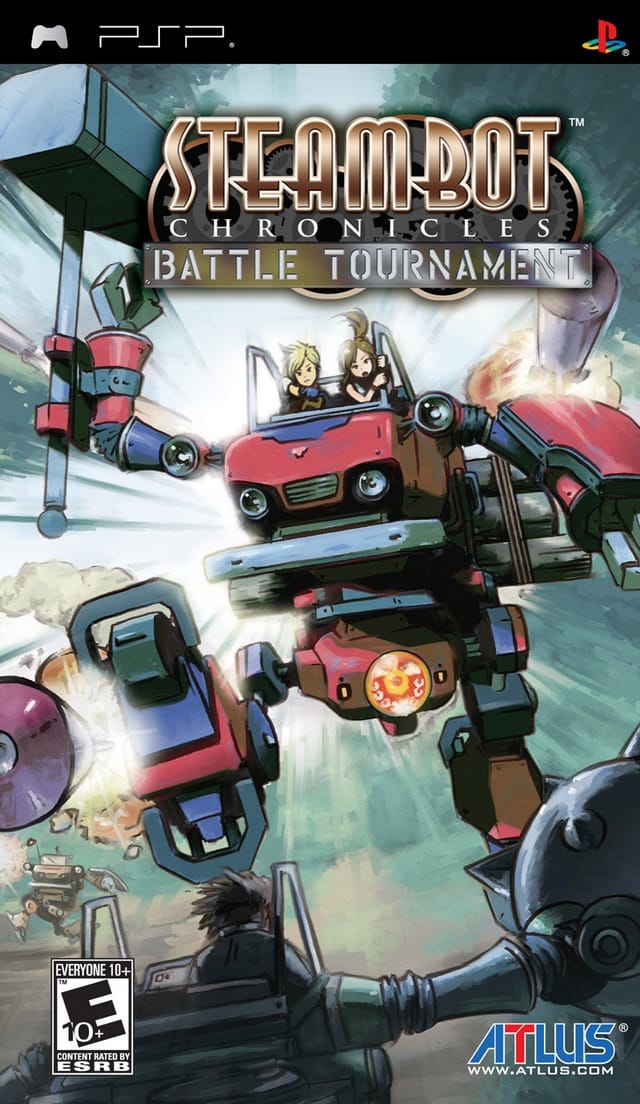
- Developer: Irem
- Release Date: July 10, 2008
A spin-off of the cult Steambot Chronicles RPG, this game swaps exploration for arena-based mech-on-mech action. You’re not just battling—you’re customizing parts, balancing weight, and tweaking builds to match your fighting style. It’s a quirky blend of tactical tinkering and real-time combat that feels unlike anything else on the system.
Why It’s Worth Playing: It’s a rare mech fighter with real customization depth—and a ton of charm. Think Armored Core meets Virtua On, in a sandbox-sized arena.
Hajime no Ippo Portable: Victorious Spirits
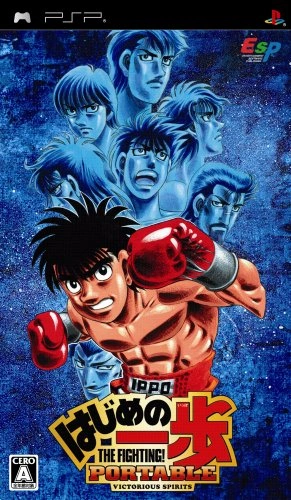
- Developer: ESP Software
- Release Date: December 20, 2007
Based on the long-running boxing anime Hajime no Ippo, Victorious Spirits captures the heart and grit of the source material with fast-paced, cinematic brawls. Special moves erupt with anime flair, and each fighter has their own unique rhythm.
Why It’s Worth Playing: It's boxing, but through a shonen lens—equal parts jab, uppercut, and pure heart. Victorious Spirits combines the thrill of real boxing with the drama of anime storytelling, which makes it perfect for fans of both gloves and guts.
Hokuto no Ken: Raoh Gaiden – Ten no Haoh
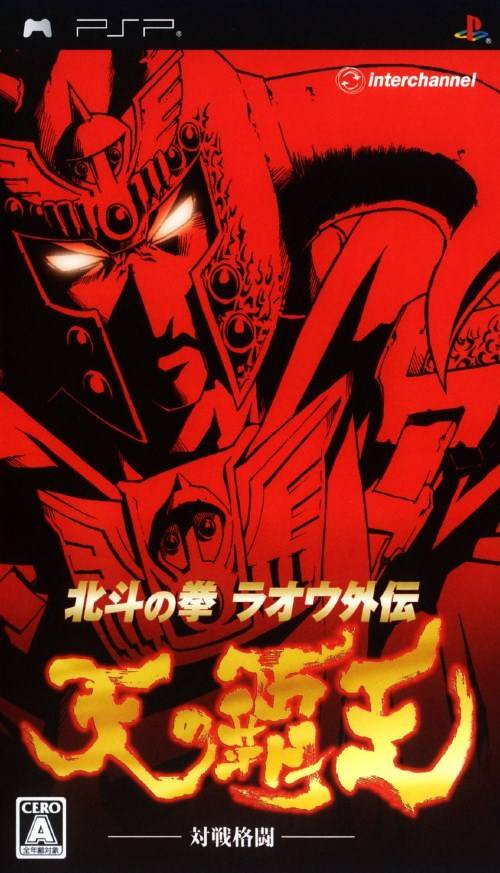
- Developer: LightWeight
- Release Date: January 22, 2009
Step into a world where every punch could be your last—literally. Raoh Gaiden – Ten no Haoh brings the savage spirit of Fist of the North Star to life in a 2D fighter that’s as faithful to the source material as it is punishing. Combat is deceptively strategic. Players must build up a power gauge to unleash devastating instant K.O. finishers. Destructible environments add to the drama, with stages like collapsing jail cells that shatter mid-fight, raising the stakes and visual spectacle.
Why It’s Worth Playing: It’s Hokuto no Ken unleashed—raw, unfiltered, and gloriously over-the-top. It's one of the most faithful anime fighters on the PSP—mechanically unique, visually explosive, and true to the lethal legacy of Hokuto no Ken.
Dissidia 012 Final Fantasy
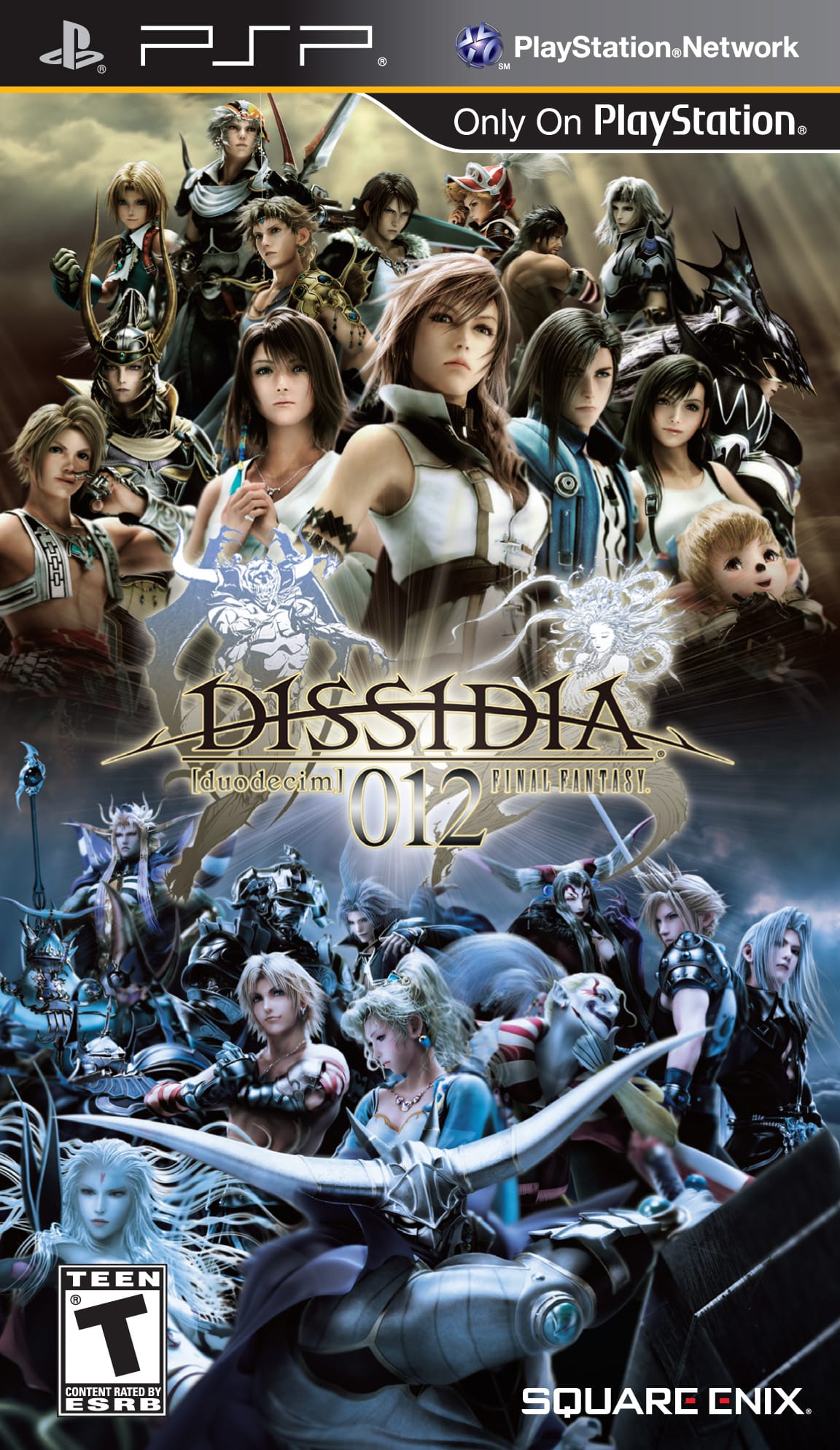
- Developer: Square Enix
- Release Date: March 3, 2011
Square Enix pulled off the impossible with Dissidia 012: a fighting game that keeps the cinematic scale and strategic nuance of Final Fantasy while being mechanically deep and endlessly replayable. The game pits iconic characters from across the series against each other in wide-open 3D arenas, where movement, spacing, and timing are just as important as raw power.
Why It’s Worth Playing: The Bravery/HP attack system remains genius—adding a risk-reward loop that makes every hit feel high-stakes. Add in RPG-style leveling, customization, a sprawling story mode, and jaw-dropping super moves, and you've got a hybrid that doesn’t just work—it sings. It's a love letter to Final Fantasy and one of the most ambitious, polished crossovers in gaming.
Dragon Ball Z: Shin Budokai – Another Road
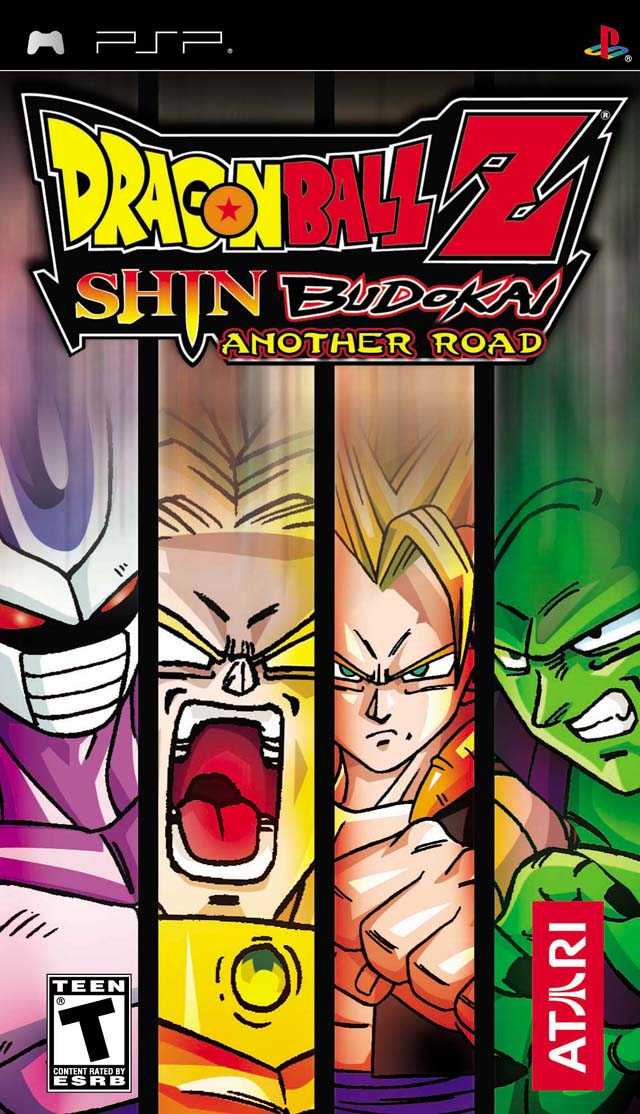
- Developer: Dimps
- Release Date: March 20, 2007
Another Road refines the core of Shin Budokai into a streamlined, high-octane fighter that nails the tone and pacing of Dragon Ball Z. Fights are fast, fluid, and kinetic, with teleport counters, beam clashes, and super transformations happening in rapid-fire succession.
Why It’s Worth Playing: It perfectly captures the look, feel, and speed of the anime. The alternate timeline story mode gives longtime fans something new to chew on, while the responsive controls and sharp presentation make this one of the smoothest DBZ experiences on any portable system.
Dragon Ball Z: Tenkaichi Tag Team
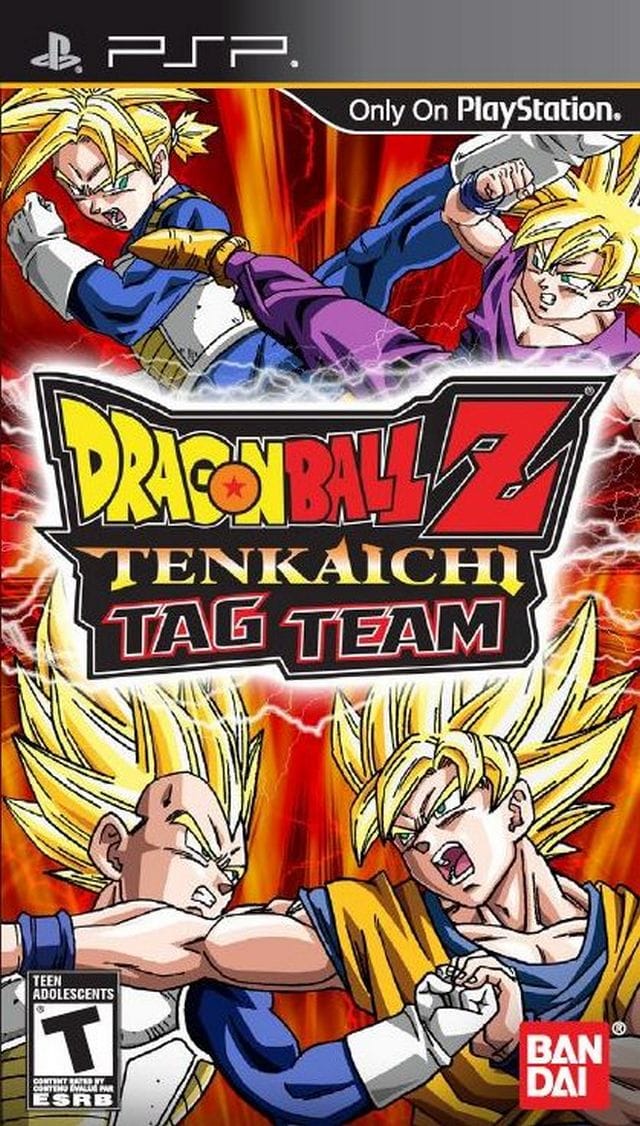
- Developer: Spike
- Release Date: September 30th, 2010
If Another Road is about precision, Tenkaichi Tag Team is about sheer chaos. Featuring a massive roster and the series’ signature over-the-shoulder camera system, this entry throws two-on-two team battles into the mix for some of the most explosive fights in DBZ game history. Tag mechanics allow you to string together assist combos or save a teammate at the last second, all while blasting through destructible environments.
Why It’s Worth Playing: It’s the closest thing to a Budokai Tenkaichi brawl on the go—with tag teams, transformations, and over-the-top finishers to boot.
Naruto Shippuden: Ultimate Ninja Impact
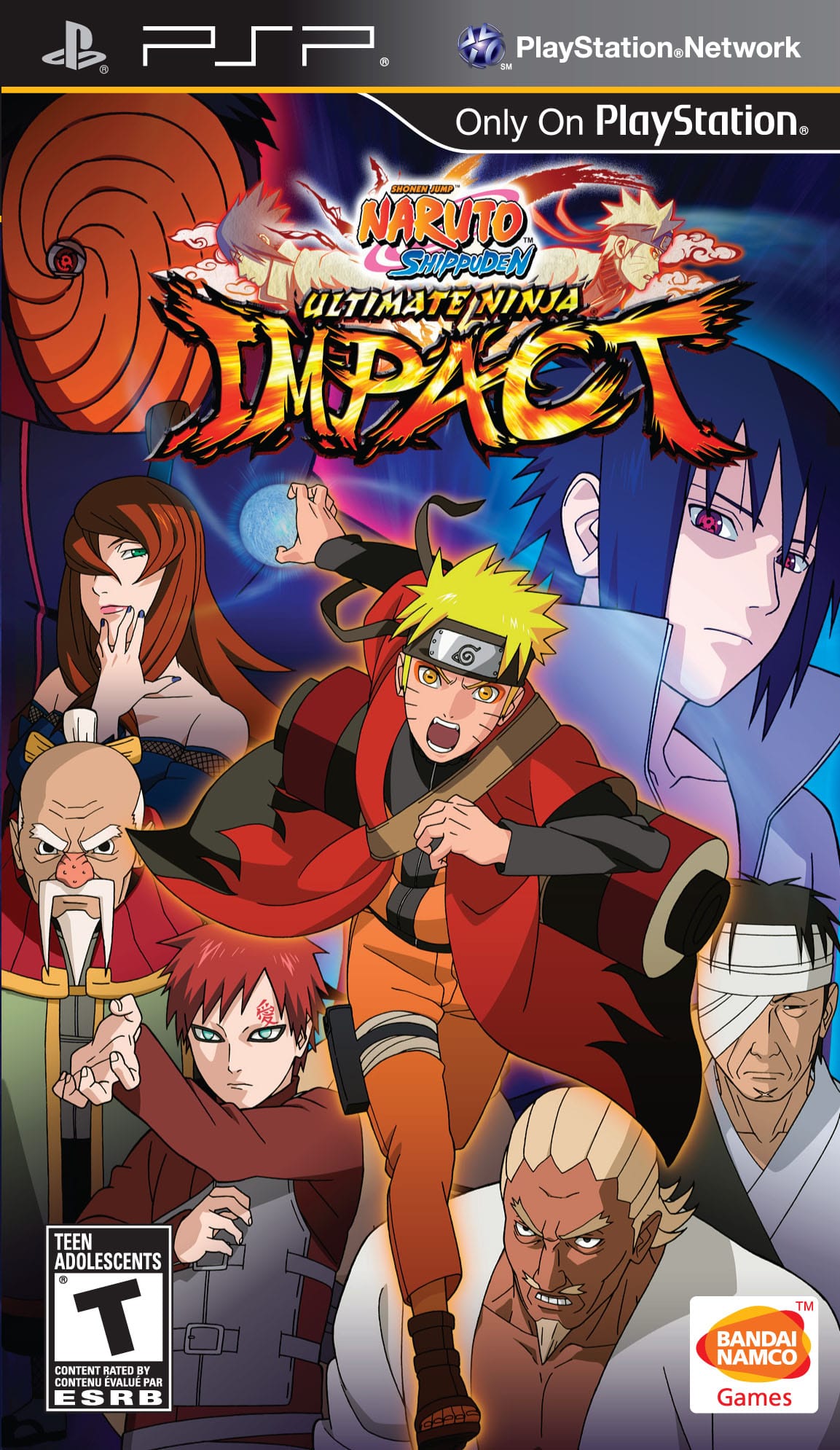
- Developer: Spike
- Release Date: September 30th, 2010
Departing from traditional fighting formats, Ultimate Ninja Impact throws players into large-scale battles against waves of enemies, capturing the feeling of an entire ninja war. While it leans more toward Musou-style gameplay than pure 1v1 combat, it keeps the flashy, chakra-infused attacks and cinematic finishers Naruto fans love. You’ll fight through key moments of the Shippuden arc with dynamic visuals and fast-paced, spectacle-heavy missions.
Why It’s Worth Playing: It’s part fighter, part action brawler, and all Naruto. A fresh twist on anime combat with tons of style.
Saint Seiya Omega: Ultimate Cosmo
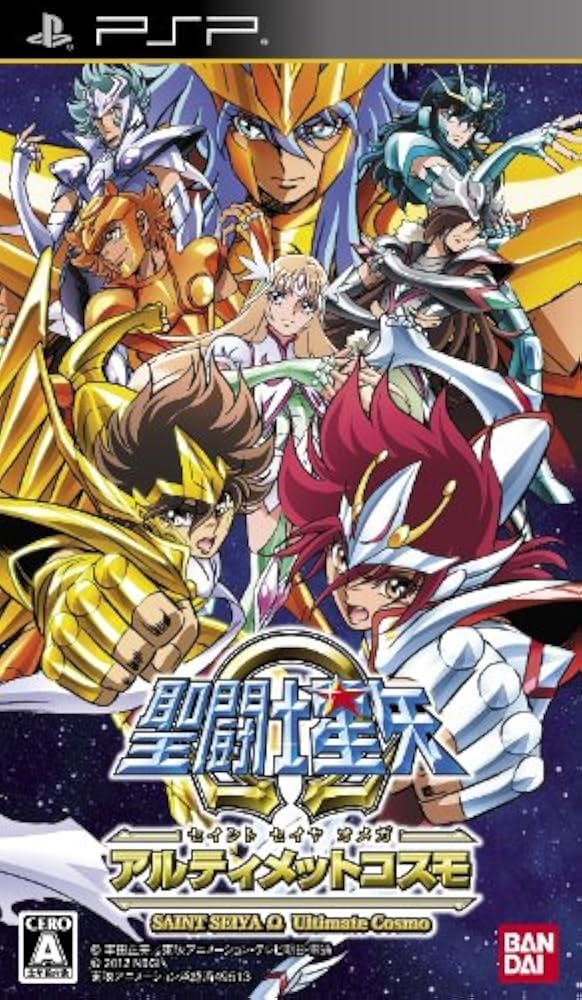
- Developer: Bandai Namco Games
- Release Date: December 29, 2012
Drawing from the later Omega series, this fighter keeps the core essence of Saint Seiya alive—mythical armor, constellation-powered specials, and melodramatic clashes between warriors of fate. While mechanically more straightforward than others on this list, it delivers a polished visual experience with flashy transformation sequences and dramatic ultimate attacks.
Why It’s Worth Playing: For Saint Seiya fans, this is a golden opportunity to step into the cloth of your favorite character and relive those larger-than-life battles.
Ultraman Fighting Evolution 0
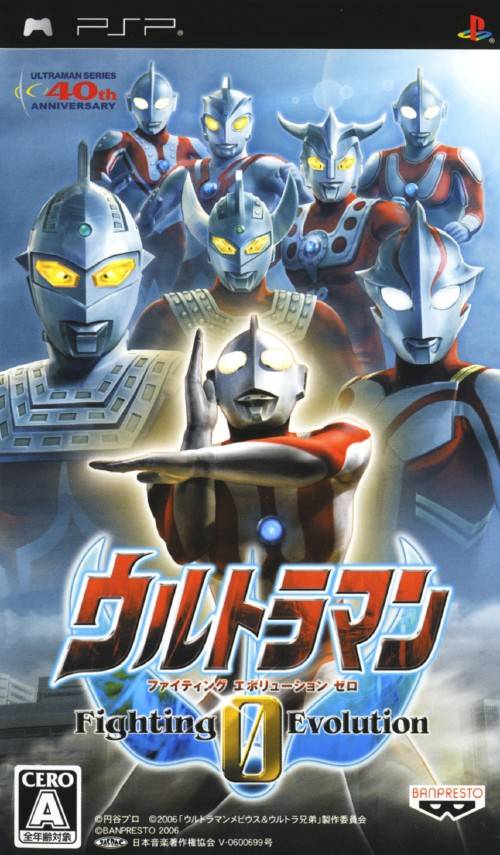
- Developer: Banpresto
- Release Date: July 20, 2006
Fighting Evolution Zero brings the Ultraman mythos to life with a level of polish and speed rarely seen in licensed games. Battles feel like actual episodes—fast, dramatic, and packed with massive attacks. Players can battle giant kaiju or rival Ultras in tightly choreographed skirmishes that highlight the game’s cinematic flair.
Why It’s Worth Playing: It’s fast, faithful, and full of nostalgia for fans of classic tokusatsu action. It’s like controlling a live-action showdown.
Shinseiki Evangelion: Battle Orchestra Portable
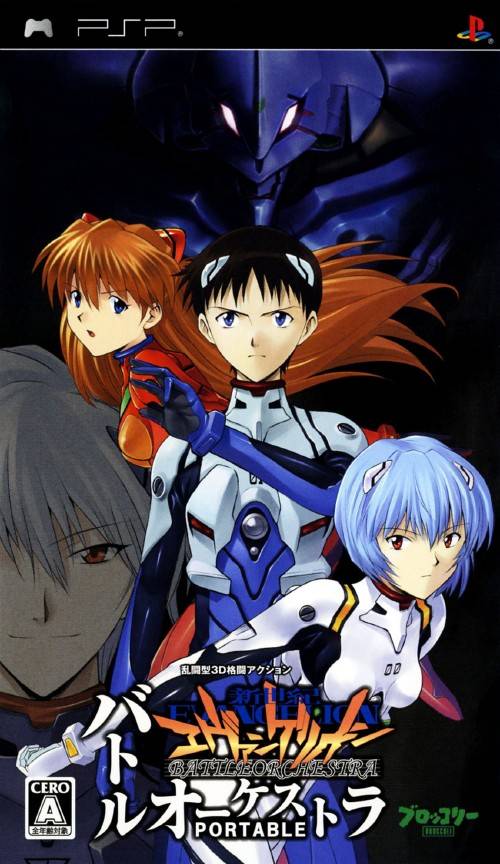
- Developer: Gainax
- Release Date: July 30, 2009
Rather than go the slow, methodical mecha sim route, Battle Orchestra throws Evangelion into a chaotic, 4-player arena fighter with environmental hazards, cinematic attacks, and explosive destruction. Think Smash Bros. by way of NERV headquarters. It’s messy, loud, and gloriously unhinged in a way that suits the Eva universe perfectly.
Why It’s Worth Playing: It’s the only fighting game where you can send an EVA Unit flying through collapsing scenery while screaming operatic soundtrack cues blast in the background.
Katekyo Hitman Reborn! Kizuna no Tagbattle
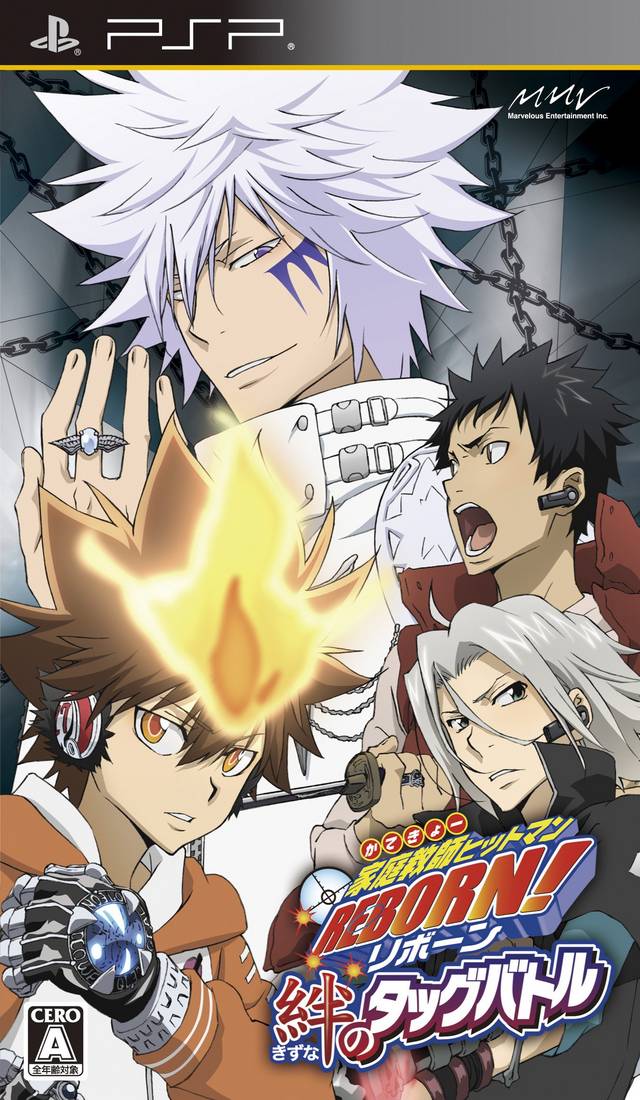
- Developer: Marvelous Entertainment
- Release Date: February 25, 2010
This overlooked gem offers quick, responsive combat, beautiful sprite work, and tag-team mechanics that rival bigger-name titles. Fans of Reborn! will appreciate the faithful cast, flashy special moves, and ability to form dream team combos. The mechanics are tight enough to appeal even if you’ve never seen the anime.
Why It’s Worth Playing: It’s one of the best tag-fighting systems on the PSP—and tragically slept on. Hidden gold for both fans and newcomers.
Rurouni Kenshin: Meiji Kenkaku Romantan – Kansei
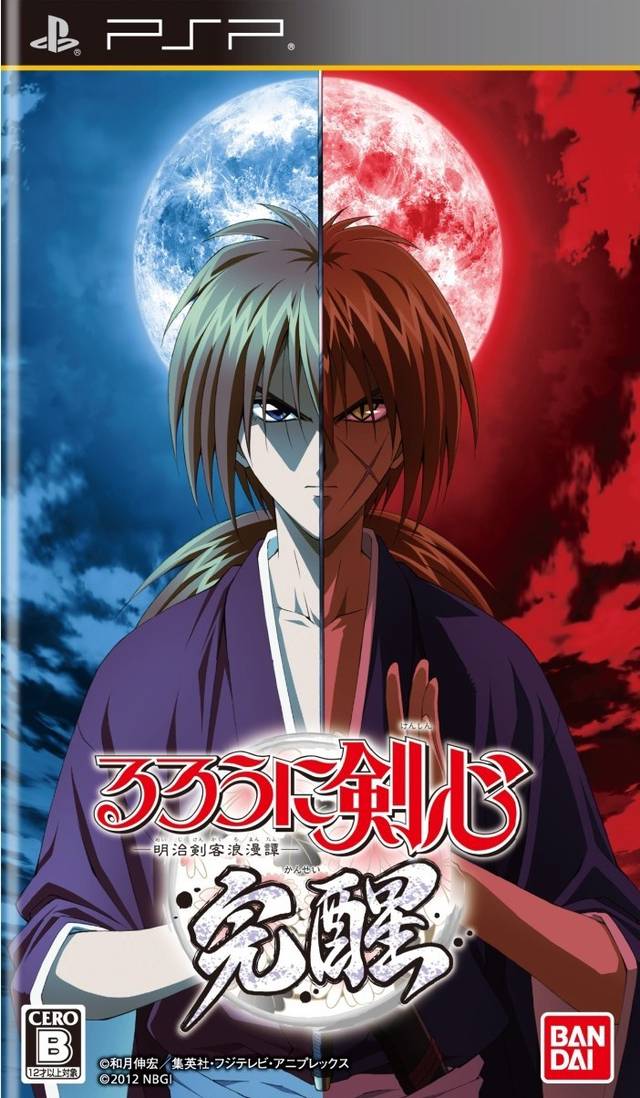
- Developer: Natsume Atari
- Release Date: August 30, 2012
Step back into the twilight of the samurai era as Rurouni Kenshin: Meiji Kenkaku Romantan – Kansei rekindles the legendary duels of the Meiji period with refined gameplay and narrative depth. The sequel builds smartly on its predecessor, offering improved controls, smoother mechanics, and a more accessible combat system without sacrificing the tension and technique of swordplay.
Why It’s Worth Playing: Whether you fight with Kenshin’s graceful Hiten Mitsurugi-ryu, Sanosuke’s brawler fists, or Aoshi’s dual kodachi finesse, each character’s fighting style is distinct and steeped in lore. It’s a beautifully crafted fusion of historical drama, character-driven storytelling, and elegant sword combat.
Tales of VS.
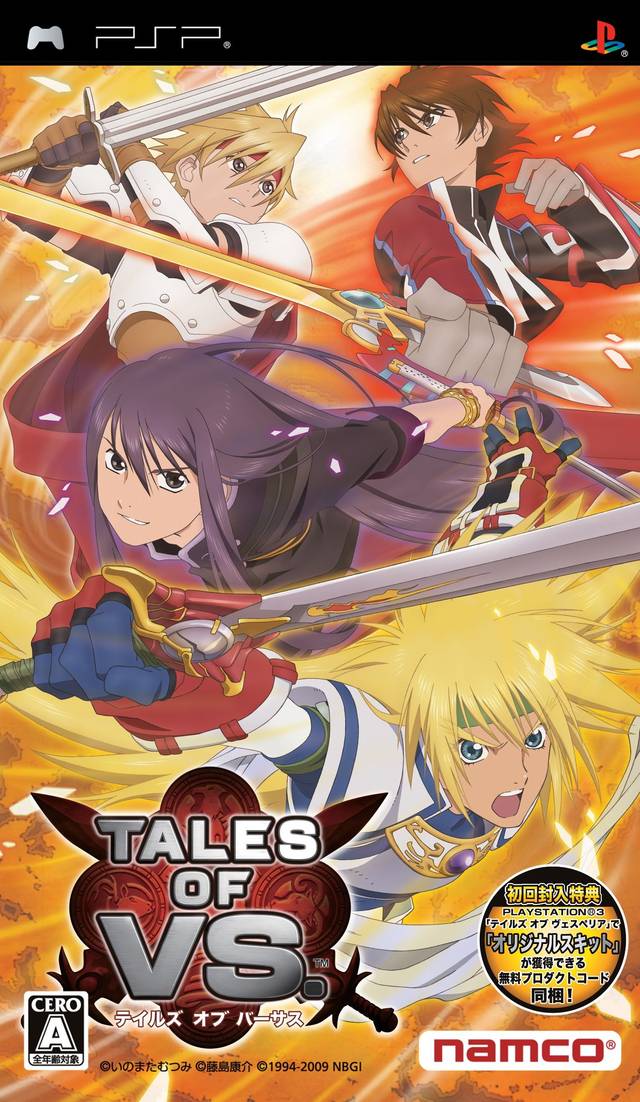
- Developer: Namco Tales Studio, Matrix Software
- Release Date: August 06, 2009
Imagine a 2D arena fighter featuring the best of the Tales franchise—fast-paced, combo-heavy action with all the artes and mystic attacks you’d expect, wrapped in a crossover campaign that’s more robust than it has any right to be. Story mode plays like a visual novel-RPG hybrid, while local multiplayer offers frantic, four-player brawls.
Why It’s Worth Playing: Tales of VS. brings together over 35 characters from across the series in a battle system that blends real-time action with tight platform-fighting mechanics. It’s fanservice done right—with crisp mechanics, a deep character pool, and just enough RPG flavor to feel like a proper Tales offshoot.
Sunday VS Magazine: Shūketsu! Chōjō Daikessen
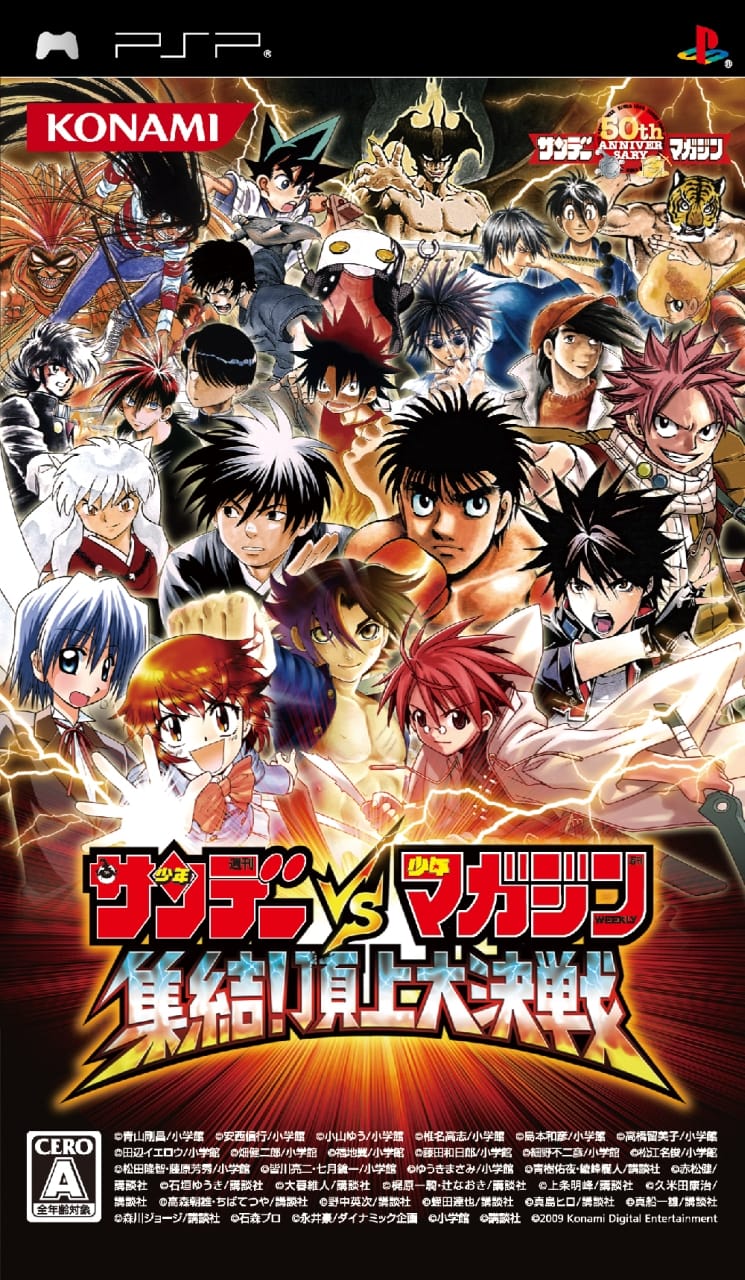
- Developer: Konami Computer Entertainment Aomori, Hudson Soft
- Release Date: March 26, 2009
Weekly Shonen Sunday meets Weekly Shonen Magazine in this wild crossover packed with classic manga icons. You’ll see characters from Inuyasha, Fairy Tail, Hajime no Ippo, Detective Conan, and more squaring off in chaotic 2D arenas, each with their own signature moves and dramatic flair. The gameplay leans arcade-simple but stays stylish, with flashy supers and over-the-top stage designs.
Why It’s Worth Playing: It’s a dream roster of manga legends packed into a single, scrappy fighter. If you grew up reading these series, this is pure crossover candy.
Kamen Rider: Super Climax Heroes
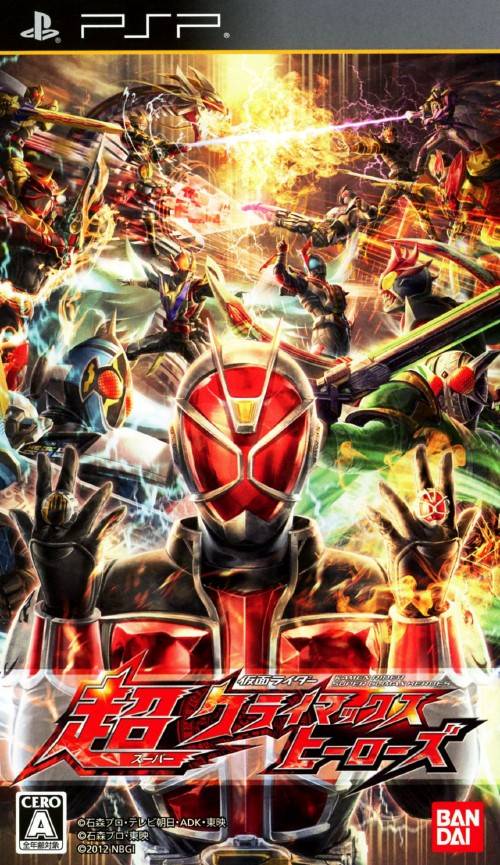
- Developer: Eighting
- Release Date: November 29, 2012
A celebration of Kamen Rider history, Super Climax Heroes delivers an all-out brawl of bike-riding heroes and villains spanning the Heisei and Showa eras. Each Rider comes complete with form changes, signature finishers, and sound effects straight from the series. The fighting system is simple and accessible, focusing on cinematic clashes and screen-shaking Rider Kicks more than complex inputs.
Why It’s Worth Playing: It’s tokusatsu wish fulfillment at its finest—a button-mashing brawler brimming with fan-pleasing details and Rider-sized attitude.
Kinnikuman: Muscle Generations
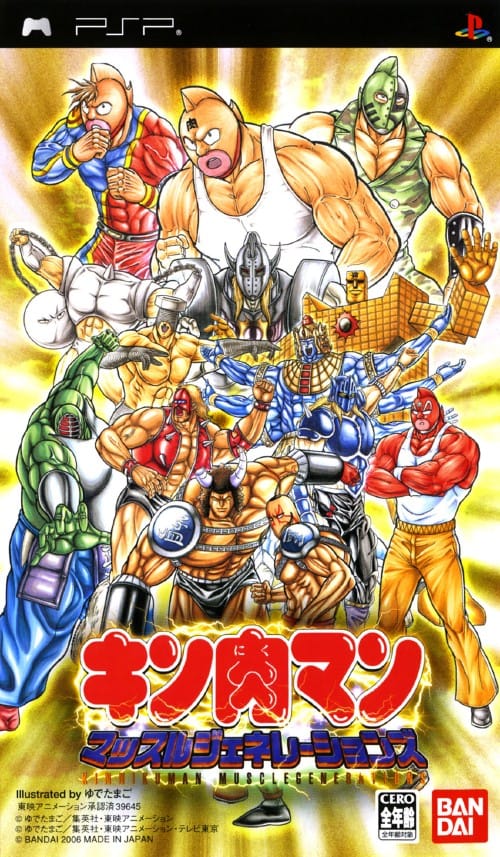
- Developer: Bandai
- Release Date: February 23, 2006
Based on the legendary Kinnikuman series (aka Ultimate Muscle), Muscle Generations blends pro wrestling mechanics with over-the-top anime action. Expect wild special moves, dramatic tag-ins, and ring-outs galore as you take control of classic characters like Kinnikuman, Robin Mask, and Ramenman.
Why It’s Worth Playing: The game thrives on spectacle—this isn’t about realism, it’s about throwing flaming German suplexes and laser-powered piledrivers. It’s the most fun you’ll have pretending pro wrestling is a legit superpower. Silly, stylish, and endlessly replayable.
Final Round
The PSP may have lived in the shadow of its home console siblings, but in the world of fighting games, it carved out an identity all its own. It wasn’t just a platform—it was a proving ground. Developers pushed the hardware to its limits, cramming in arcade-perfect ports, experimental crossovers, and anime-fueled slugfests that rivaled full-blown console releases. These weren’t watered-down side projects—they were legitimate fighters that still hold up today, both in mechanical depth and pure entertainment value.
For fans of the genre, it was an unexpected mecca—a machine that lets you grind out combos, throw down in tournaments, or relive anime battles anywhere, anytime. No other handheld of its generation offered the sheer range and fidelity of fighting experiences. It was home to pixel-perfect 2D brawlers, full-featured 3D arena fighters, and everything in between.
If you’re a fan of fighting games, the PSP’s library isn’t just worth revisiting—it’s worth celebrating. It was a golden age in your pocket.

